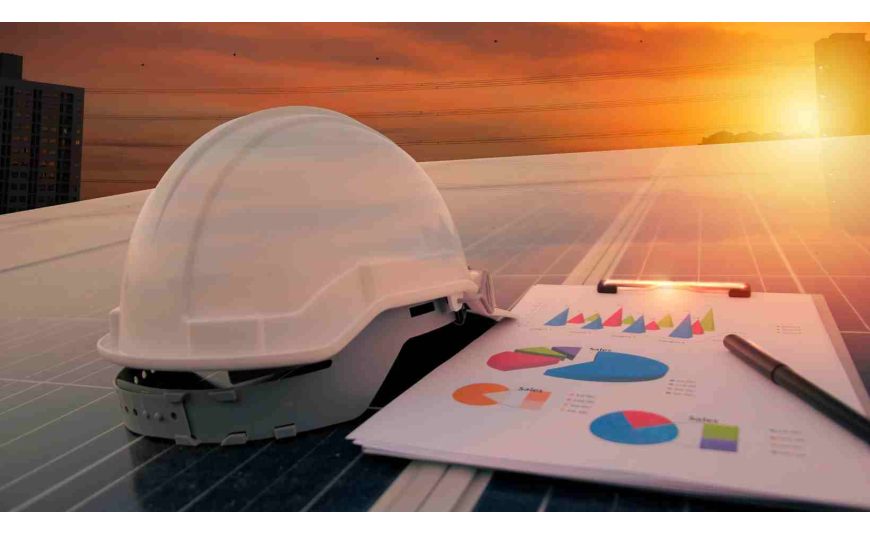Practical guide: profitability of solar panels
- 17 Nov, 2023
- Help , Photovoltaic , Self-consumption

Solar energy offers significant benefits both environmentally and financially. To guide you through the process of installing solar panels in Europe, follow our fully optimized SEO guide to maximize your energy savings.
Step 1: Solar Energy Production Calculation
Before investing in solar panels, it is crucial to understand their energy production potential, tailored to various European countries. Follow these steps for an accurate assessment:
1.1. Check solar panel production capacity: Manufacturers provide information on their panel production capacity. This data is crucial to estimate the amount of energy your panels can generate, taking into account the climatic specifics of your region.
1.2. Use an online tool to estimate solar production: Online calculators, such as the one offered by I'M Solar, consider geographical location, panel orientation, and other parameters to estimate solar production in your region. This provides a more precise and integrated perspective.
1.3. Maximize production with panel orientation and tilt: Adjust the angle and orientation of the panels based on your location to maximize solar exposure throughout the day.
Step 2: Electrical Consumption Assessment
To ensure the profitability of solar panels, a thorough understanding of your current electrical consumption, adapted to your country's standards, is essential. Follow these steps for an accurate assessment:
2.1. Analyze your recent electricity bills: Examine your bills carefully to obtain accurate data on your electrical consumption. Identify consumption trends and peak periods, taking into account seasonal peculiarities in your region.
2.2. Identify peak electrical consumption times: Identify times of the day when your electrical consumption is highest. This will help you properly size your solar installation, considering consumption habits specific to your country.
Step 3: Electricity Tariff Analysis
A thorough analysis of electricity tariffs is crucial to understand the current cost of energy, considering regional variations. Follow these steps for an accurate assessment:
3.1. Identify the unit electricity tariff: Check your bills to know the rate you pay per unit of electricity, taking into account tariff peculiarities in your country.
3.2. Consider seasonal tariff variations: Some electricity tariffs vary with seasons. Understand these variations to anticipate your costs and savings throughout the year, depending on your country's tariff policies.
Step 4: Consideration of Installation Costs
The installation of solar panels involves initial costs. Evaluate these expenses carefully by following these steps:
4.1. Get quotes from multiple installers: Request quotes from several installers, ensuring that costs include delivery, and compare installation costs. Make sure to include costs for European-quality equipment.
4.2. Consider upgrades needed for your electrical system: Your electrical system may require modifications to integrate solar panels. Take these costs into account in your evaluation, considering the electrical standards of your country.
Step 5: Subsidies and Tax Credits
The government of each European country encourages solar panel installation by offering subsidies and tax credits. Follow these steps to maximize your benefits, considering national policies:
5.1. Check government grant programs: Inform yourself about grant programs available in your country. Some may cover a significant portion of your installation costs.
5.2. Ensure compliance with all conditions for tax incentives: Tax credits often have specific conditions. Ensure you understand and fulfill all requirements to fully benefit from your country's tax advantages.
Step 6: Return on Investment (ROI) Calculation
Return on Investment (ROI) is a key indicator to assess the profitability of your solar panels. Follow these steps to calculate it accurately:
6.1. Subtract total costs from annual energy savings: Calculate the projected annual energy savings and subtract total costs, including installation and upgrades, considering the specific energy standards of your country.
6.2. Divide initial cost by annual savings: This division will give you the number of years needed to recover your initial investment. The shorter the ROI, the more profitable the installation of solar panels is, considering the climatic conditions of your region.
Conclusion
By following these steps methodically, you will be able to calculate the profitability of solar panels in Europe. For a streamlined experience, use the I'M Solar simulator, which provides a detailed quote for the equipment needed for installation, including high-quality European solar panels, free delivery, and included insurance. Solar energy not only offers savings on your electricity bills but also contributes to a more sustainable future in each European country. To learn more, contact us today and discover how self-consumption, photovoltaic solar panels, and solar energy can transform your daily life.
Contact us now for a free consultation on solar panel installation and start your journey towards clean and sustainable energy!




